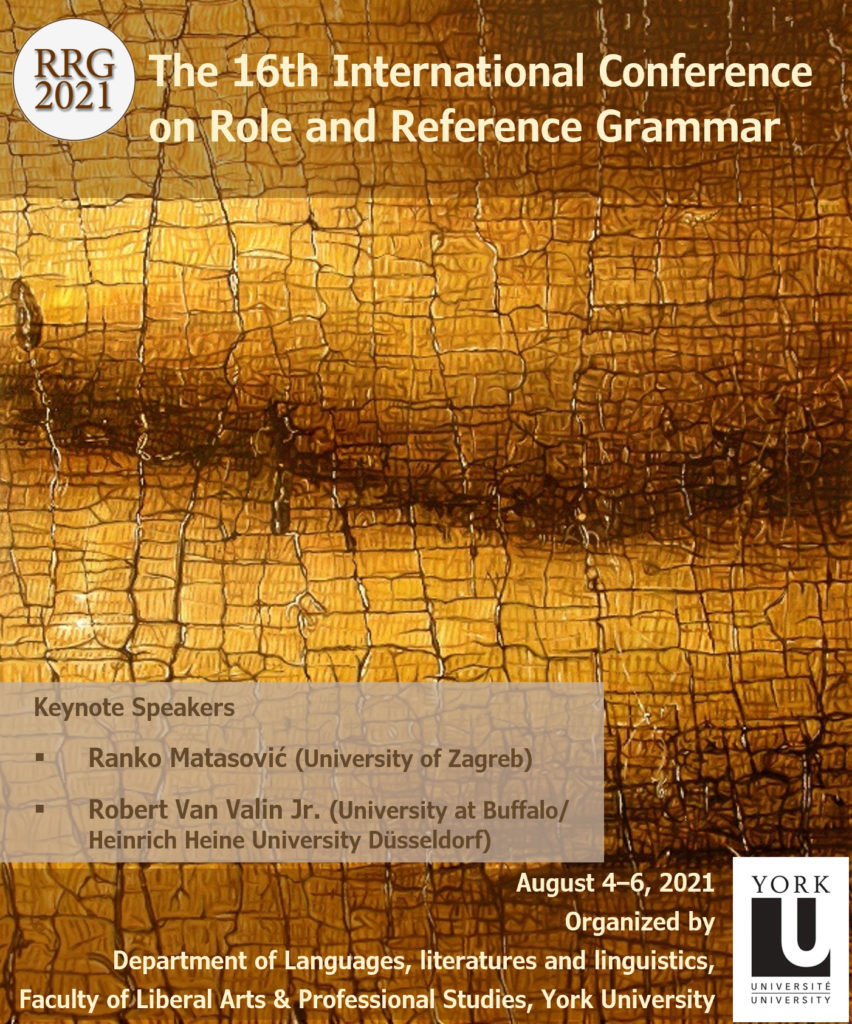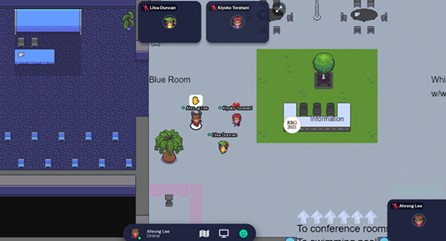
The Department of Languages, Literatures & Linguistics (DLLL) in the Faculty of Liberal Arts & Professional Studies (LA&PS) organized and hosted the 16th International Conference on Role and Reference Grammar (RRG2021). The conference ran from Aug. 4 to 6 and was conducted online due to the pandemic.

More than 70 registrants from across different continents attended this year’s event, which was double the number of participants from past years. Role and Reference Grammar is a syntactic theory that emphasizes the importance of data from “exotic” languages and the communicative function of language.
RRG2021 featured two keynote lectures: “RRG–Abstract Grammar vs. Processing Model” delivered by Robert Van Valin Jr. (University at Buffalo/Heinrich Heine University Düsseldorf), the primary developer of the theory of RRG, and “A New Approach to Aktionsarten in Role and Reference Grammar” by Ranko Matasović (University of Zagreb), a typologist and a specialist in Celtic and Slavic languages.
An additional 26 conference papers were presented at the conference. Topics covered a range of subjects, including the question of case-marking alternation to split behaviour centering on causation, information structure, syntax-semantics linking and the application of RRG to second language acquisition, language processing and computational models. The conference also highlighted a special contribution from the information technology sector by John Ball, the chief technology officer of Pat, Inc. Titled “Engineering RRG in 2021,” it demonstrated how the theory of RRG is used in Natural Language Understanding.
The conference involved both established and junior researchers, addressing issues on not only often studied languages such as English, Spanish, Italian, French, Icelandic, Irish, Japanese and Chinese, but also lesser studied languages, including Bonggi (an Austronesian language), Daakaka (spoken in Ambrym, the Republic of Vanuatu), Gĩkũyũ (a Bantu language), Persian, and Reunionese (a French-lexified Creole language), as well as two sign languages (SL): Taiwan SL and German SL.
“This year, a few graduate students presented very interesting papers, introducing under-studied topics and exploring less-documented languages within RRG,” said Kiyoko Toratani, an associate professor in the Japanese Studies section of DLLL in LA&PS, who was one of the conference organizers.

Liisa Duncan, assistant professor, teaching stream, in the Linguistics section of DLLL in LA&PS said, “I was very impressed by the level of engagement and encouragement at this conference. Participants were clearly invested in and inspired by each other’s work.”
The conference adopted three online platforms, giving each a distinct role to encourage different levels of engagement and interactions: Zoom for delivery of live presentations, Microsoft Teams for chats, textual comments and questions regarding the talks and for sharing files and links to recorded videos, and Gather for social networking and a demonstration and live deliveries of Q-and-A sessions by pre-recorded presenters.
Ahrong Lee, assistant professor, teaching stream in the Korean section of DLLL in LA&PS, who served as the other organizer of RRG2021, noted, “I find the use of Gather was especially very effective, as we, or our avatars, could freely move around the virtual conference site to meet and greet the participants, or ask questions which we could not in Zoom.”
The conference organizers thank York University and the Office of the Dean, LA&PS, for supporting this important event, and to Alex Newman and other members of eServices in LA&PS for the technical assistance.
